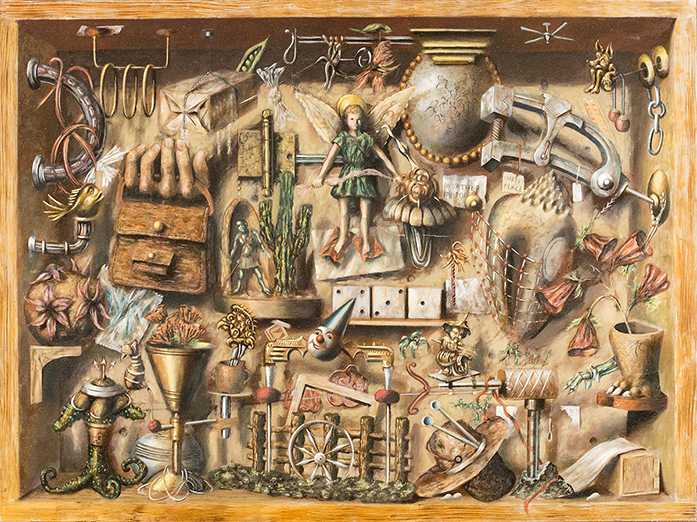Steve Levin is unwilling to be confined by conventions. His artwork, begging for a second and even third look, can’t be boiled down to a “terse explanation.”
Levin, a professor of art at Williams College, will give a lecture at 7:30 p.m. today in 116 Art Building West.
Levin’s artistic career began at Reed College in the 1970s. He enrolled with the intention of becoming a writer, having no idea how his life would change by taking an art class.
“It was very hard; I was by far the worst in my class by a large margin,” Levin said. “Most of the kids in my class had had a little background before that, but I found it incredibly interesting because it was incredibly hard.”
Despite the difficulties in catching up to the curve, Levin earned a B.A. and went on to get an M.F.A. in painting from the University of California.
Levin works primarily in oil paintings, more specifically still life. A visit to the de Young Museum in San Francisco, displaying the work of 19th century still-life painter William Harnett, changed his perception, he said.
“The painting was mesmerizing to me, this was a whole universe he had created,” Levin said. “Granted, it was common things, they weren’t these extraordinary things. But he had created this very complete world on the tabletop, and the closer you looked into the painting, the further into the world you could go.
“I immediately thought ‘this is the kind of painting I would like to be able to paint someday,’ and I might hopefully get somewhere close to that,” Levin said. “I haven’t, but that’s the path I wanted to follow.”
Levin tries to continue the tradition of the great still-life specialists of the 18th and 19th century, with what he believes to be “some limited success.”
Instead of carrying on the fruits, flowers, and wine bottles on a table, Levin aims for a different approach.
“I think that the pictures do have some of that dream-like combinations and juxtapositions of things that don’t make really any literal sense in a way we would expect,” Levin said. “It draws connections between things that are evocative but things we wouldn’t immediately put together but all still life paintings at least on some level have a connection with the idea of mortality, distinguishing it from living, breathing things.”
Despite still lives being “on the peripheries” of the art world and competing with the modern age, Levin said they are still an important part of the art world, cared for by many.
“I have all the same doubts everyone else has, whether visual art is as pertinent to this age of our lives, since we’re living in an era where the digital image is ubiquitous in our life,” Levin said.
“Painting isn’t central to our lives in the same degree it was to people living in the 16th century, and the painting that appears in their church or their town hall is a new, important source of information and excitement, but that is not the case anymore.
“That being said, I don’t think it is worthless to practice these arts,” Levin said. “There is a dialogue taking place with history, there is an exercise taking place in the mind of the practitioner … I’m proud to be, in some little tiny way a part of that community.”
LECTURE
Artist’s Talk by Painter Steve Levin
When: 7:30 p.m. today
Where: 116 Art Building West
Admission: Free



